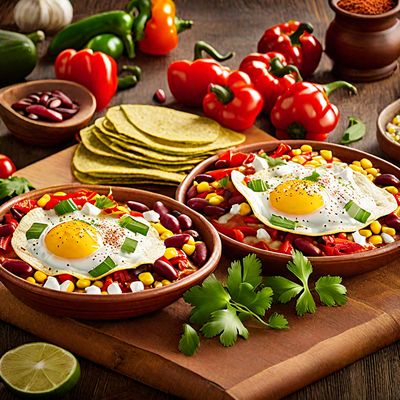
Ingredient
Sea salt
Nature's Mineral Treasure
Sea salt is harvested from evaporated seawater and is known for its coarse texture and briny taste. It has a distinct flavor that is often described as more complex and nuanced compared to table salt. Sea salt is widely used in cooking, baking, and seasoning.
Origins and history
The use of sea salt dates back thousands of years, with evidence of its extraction and trade found in ancient civilizations such as Egypt and China. It has been an essential ingredient in preserving food and enhancing flavors. Today, sea salt is produced in many coastal regions around the world.
Nutritional information
Sea salt is primarily composed of sodium chloride, but it also contains trace amounts of other minerals such as magnesium, potassium, and calcium. It is lower in sodium compared to table salt, making it a popular choice for those watching their sodium intake.
Allergens
Sea salt is generally safe for consumption, but individuals with high blood pressure or certain medical conditions should moderate their intake due to its sodium content. It is advisable to consult a healthcare professional if you have any concerns.
How to select
When selecting sea salt, opt for high-quality brands that offer unrefined and minimally processed options. Look for coarse or flaky sea salt that is free from additives or anti-caking agents. Additionally, consider the source and production methods to ensure sustainability and purity.
Storage recommendations
To maintain the quality and prevent clumping, sea salt should be stored in an airtight container in a cool and dry place, away from moisture and direct sunlight. Avoid using a salt shaker with large holes, as it may cause the salt to absorb moisture from the air.
How to produce
Sea salt cannot be produced by amateurs as it requires access to coastal areas with suitable conditions for evaporation. However, individuals can collect sea salt by evaporating seawater in small quantities, although this may not yield the same quality as commercially produced sea salt.
Preparation tips
Sea salt can be used as a finishing salt to sprinkle over dishes just before serving, adding a burst of flavor and texture. It is also commonly used in brines, marinades, and rubs for meat and seafood. Additionally, it enhances the taste of baked goods, chocolates, and caramel.
Substitutions
Table salt can be used as a substitute for sea salt in most recipes, although the flavor and texture may differ slightly. However, it is important to adjust the quantity, as table salt is more concentrated. Other suitable substitutes include kosher salt and Himalayan pink salt.
Culinary uses
Sea salt is widely used in various cuisines around the world. It is particularly popular in Mediterranean, Asian, and Middle Eastern dishes. It is commonly available in coastal regions and can be found in specialty food stores and online retailers.
More ingredients from this category
Recipes using Sea salt » Browse all

Tajik Sofakli Palov
Silk Road Delight: Tajik Sofakli Palov

Nadugi Pancakes
Savory Korean Pancakes with a Twist

Moroccan-style Eggs Benedict
Savory Moroccan Twist: Eggs Benedict with a Spicy Harissa Hollandaise

Greek-style Bibimbap
Mediterranean Medley: Greek-inspired Bibimbap

Cuban Budae Jjigae
Havana's Spicy Stew: Cuban Budae Jjigae

Vietnamese Seafood Hot Pot
Oceanic Delight: Vietnamese Seafood Hot Pot

Lampredotto Sandwich
Tuscan Delight: Lampredotto Sandwich with Herb-infused Broth

Bajan Salt Bread Recipe
Savory Delight: Bajan Salt Bread

Bavarian-style Gamjatang
Hearty Bavarian Potato Stew with a Korean Twist

Huevos Rancheros Hungarian Style
Paprika-infused Huevos Rancheros

Arab-Style Caesar Salad
Middle Eastern Twist: Arab-Style Caesar Salad with Za'atar Croutons

Chancho en Piedra Crimean Tatar Style
Spicy Crimean Tatar Tomato and Pepper Dip




